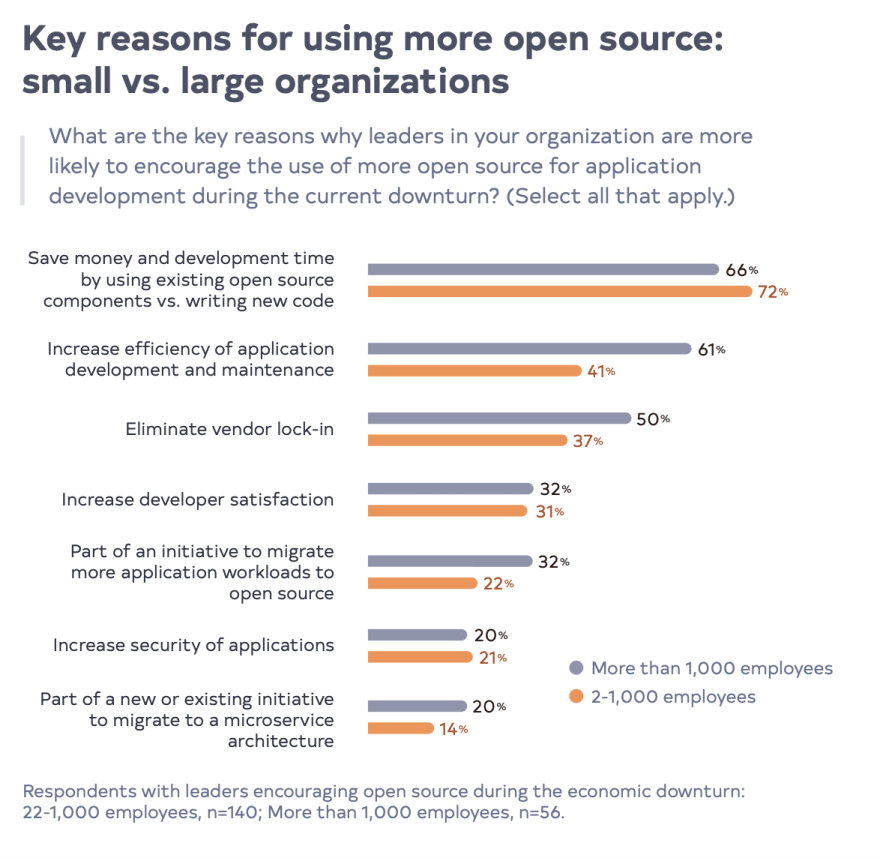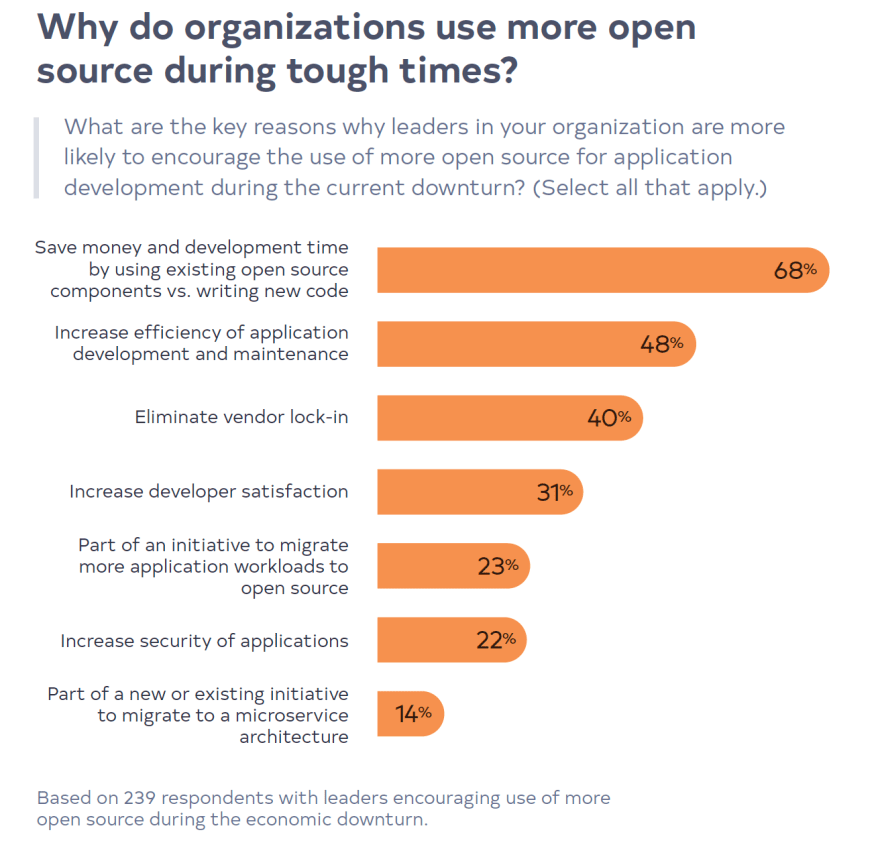In June of 2020, Tidelift fielded our annual managed open source survey of technologists who use open source to build applications at work. Over 600 people shared how they use open source software today, what holds them back, and what tools and strategies would help them use it even more effectively.
In this post, we share the second of nine key findings. If you don’t wait to wait for the rest of the results, you can download the full survey report right now at the link below.
Finding #2: organizations look to open source to save time and money, while increasing efficiency
In our first post in this series, we discovered that organizations are increasing their use of open source during the current COVID-19-induced recession. We wanted to learn why. Was it simply a cost savings measure or were there additional benefits that using more open source might bring?
Out of the full survey sample, 44% of respondents reported that their organizations would increase their use of open source for application development. So we followed up by asking about the key reasons for this increase in open source usage.
Unsurprisingly the top answer, chosen by over two-thirds of respondents (68%), was that open source helps them save money and development time by using existing open source components versus writing new code. This has always been one of the enticing benefits of open source—that developers move more quickly because they can choose from billions of lines of code that have already been written versus having to start from scratch.
Forty-eight percent of respondents identified increased efficiency of application development and maintenance as a key reason why open source usage was being encouraged. This, too, is no surprise. When developers choose open source components versus writing code from scratch, they benefit from the fact the code is being used and maintained by a larger community beyond their own organization.
While there are few guarantees about quality and continued maintenance with open source application components (well, at least until the Tidelift Subscription came along 😊), developers can often expect that, if they are making good component choices, the open source they use will continue to improve as long as the community that nurtures it stays healthy.
Interestingly, organizations with more than 1,000 employees were much more likely to cite efficiency (61% vs. 41% for organizations under 1,000 employees) as a reason for encouraging the use of more open source.
The third most important benefit of using more open source, chosen by 40% of respondents, was eliminating vendor lock-in. Clearly, more organizations are turning to open source as a way to replace expensive proprietary software and gain more control over future expenditures. Of note, this too was a more popular answer with larger organizations (50% for organizations with over 1,000 employees vs. 37% for organizations under 1,000 employees).
While only 20% of respondents cited having an internal initiative to move more workloads to open source, one-third of larger organizations over 1,000 employees (33%) identified this as a key reason, which tied for the third most popular choice among this group.
 Organizations of all sizes did not prioritize increasing the security of applications as a primary reason for moving to more open source. Only 22% of organizations identified this as a key benefit, and this was the most consistent response across different organization sizes.
Organizations of all sizes did not prioritize increasing the security of applications as a primary reason for moving to more open source. Only 22% of organizations identified this as a key benefit, and this was the most consistent response across different organization sizes.
While security may not be a primary reason to choose open source, it is a subject that receives intense attention in the open source world. This provides a nice segue into our next set of findings, where we explore some of the key concerns organizations have about using open source and how they can address them.
Want the full survey results in one report? Get them here now.
Read more about how we conducted the survey, see the survey demographics, and learn why we call it the managed open source survey.







Oldest comments (0)